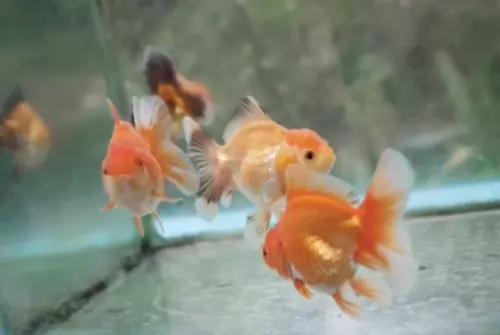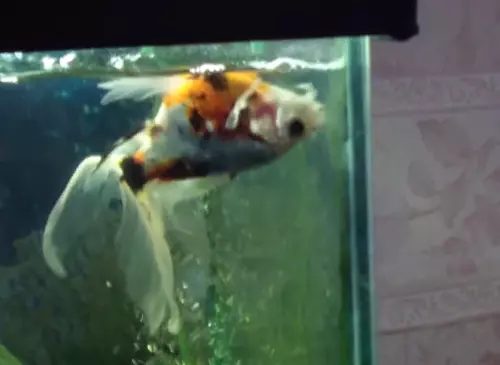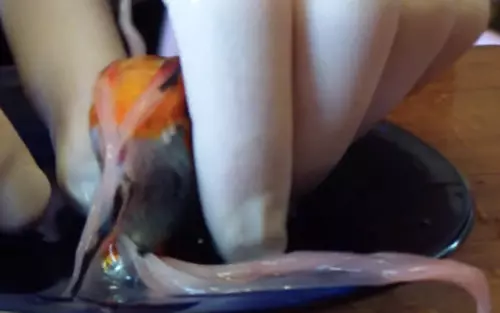Disease of goldfish, which are most commonly encountered by owners of aquariums: swimming upside down, lying at the bottom of the aquarium, falling off the scales, tail detached, surfacing to the surface of the water, grow fins, swimming on its side, lying on the bottom, heavily breathing, fin rot, blackened edges, covered with red spots.
Those who have read the above painful conditions of an aquarium fish will probably think again: get them an aquarium or not. Our goal, however, is to explain to our readers which external condition and behavior of a fish characterizes a certain disease.
Reyus Mammadli
Indeed, diseases of aquarium fish are quite common and are often the fault of the owners of aquariums. Failure to follow basic recommendations and rules of operation, improper care, poor quality food or saving on equipment – all this can lead to various diseases. If you do not start treatment of fish in time, it is fraught with the death of pets. To begin with, you need to know what diseases are most common in goldfish, as well as what preventive measures can be taken to avoid their occurrence.
Signs of healthy fish
Healthy individuals lead an extremely agile lifestyle. Their movements are smooth, often unhurried.
The color of the scales – bright, without any plaque or inclusions. By the way, goldfish have such a good appetite that they can even die from overeating. Therefore, the first cause for concern is its deterioration, when the pet refuses to eat.

The main symptoms of diseases of goldfish
There are a number of symptoms, the presence of which should alert you:
- Clouding or enlargement of the eyes;
- change in the color of the scales;
- Red spots on the fish (or any other color);
- Problems with appetite;
- Abnormal movements of the fish;
- White plaque and mucus;
- redness of the gills;
- Rotting areas on the body;
- bloated belly;
- skin flaking;
- The appearance of papillomas, growths, etc.
All these signs indicate the presence of diseases that must be treated urgently. Before buying fish, it is desirable to study possible diseases and their symptoms in advance in order to notice the problem in time.
Non-infectious diseases of goldfish
All diseases of these aquarium inhabitants can be divided into two groups – infectious and non-infectious. Infectious diseases are more dangerous because they can be transmitted to other aquarium inhabitants.

First consider the diseases that are not transmitted to other fish. They usually result from improper care of the fish and the aquarium itself, mechanical injuries or chemical influences.
These diseases include:
- Asphyxia. Pets do not eat well, do not grow, their gills are constantly open, they are on the surface of the water, greedily inhaling air – all signs of a lack of oxygen, caused by poor aeration, improper aquarium temperature or overcrowding of the tank. The problem is solved by setting an optimal microclimate, establishing the process of oxygenation and dispersal of pets.
- Argulosis. Caused by parasites that suck on the fish and feed on their blood. As a result, reddened areas, ulcers and swellings appear on the body. Remove the parasites can be manually, putting the goldfish on a damp cotton swab and using tweezers to get all argulus. Can help common manganese, a drug sera Argulol. These parasites like heat, so in summer is better to have new individuals.
- Gas embolism. The disease occurs due to an excess of oxygen in the tank. The individual darkens the gills, bubbles appear on the body and swelling. If the fish must be rescued urgently, then put it in an aquarium without aeration.
- Shapeshifter. A bloated fish is a sure sign of overeating. Goldfish have no measure at all regarding food absorption, so this happens quite often. All this leads to overeating, as a result of which the fish turns over on its belly up and almost does not move. Individuals need to move into a separate tank with a good supply of oxygen. Obligatory diet – the first 2 days it is better not to feed at all, then introduce the diet of plant food in small quantities.
Infectious diseases

Infectious diseases of aquarium goldfish include diseases caused by viruses, bacteria and parasites.
We will distinguish the main infectious diseases:
- Ichthyophthirius. The disease is provoked by the impact of the fungus. On the fish in the aquarium there are white spots, which resemble semolina grains. There is a gradual destruction of scales and fins. Treatment – salt baths (initially) or the drug Bicillin.
- Fin rot. This disease destroys the fins, tail and is fraught with the death of the individual. Clear signs: cutting the edges of the tail, the appearance of white plaque on the head, fins become bluish in color. Antibacterial drugs are used for treatment – copper sulfate, malachite green, streptocide. Must carefully read the instructions, so as not to err with the dosage.
- Branchiomycosis. This is a fungus that provokes the destruction of the body of individuals. The first symptoms are red streaks on the body, rotting gills. Upon detection of the problem must immediately isolate the fish, clean and disinfect the aquarium. Of drugs helps furazolidon, magnesium sulfate, etc.
- Lepidortosis. This disease is bacterial in nature. Recognize it by the raised scales. It is important to start treatment in time, otherwise there is a risk of complete loss of scales and death of the pet.
- Furunculosis. There are three forms – acute, chronic and lightning. The last form is the most dangerous, because it has no special symptoms, so the fish most often dies. The acute form is characterized by a change in skin coloration to a darker color. The problem can be solved by disinfecting the tank, soil and plants. It is necessary to increase the water temperature.
- Rubella. Can be of bacterial and viral origin. It is treated with the help of manganese solution, saline solution. On sale there are special antibiotics that can be given with food.
Prevention
Prevention will help reduce the risk of disease in these beautiful aquarium inhabitants. Here are a number of simple recommendations:
- Plants, decor and new equipment should be thoroughly washed before being placed in the tank with the fish.
- All new pets should be sent to a one-week quarantine.
- All decor and soil should not have sharp edges, so that the inhabitants do not damage their bodies.
- It is important to avoid overpopulation, so that there is no oxygen deficiency. For 4-5 goldfish need an aquarium at 26 gal (two fish fit the tank at 13 liters).
- Ensure a normal supply of oxygen (installation of a filter with aeration will help).
- It is important to have live plants, which have a positive effect on the microclimate.
- Feed according to a schedule at the same time.
- Change the water often enough – at least once a week.
Treatment

Treating aquarium goldfish is a complex process that requires experience, knowledge and additional resources. Therefore, it is better to contact professionals if your fish are already sick. Remember that goldfish should be treated by qualified staff, and your job is to admire them and follow the recommendations for their care.
If you need an aquarium fish vet, use this link: https://fishvets.org/find-a-fish-vet/





